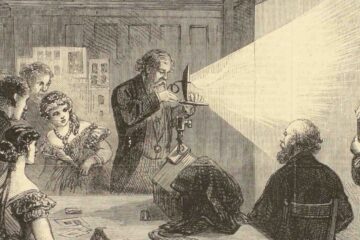“The Queen’s Mark: Guns, Photography, and the Visual Abstraction of Precision,” Victorian Review 48:1 (Spring 2022).
Brief excerpt:
When we think today about Victorian photography, certain categories spring to mind: portraits, mug shots, landscapes, metropolitan and colonial scenes—categories defined by similarities in form, style, or subject matter. To approach photographs solely through a critical frame of genre is to miss, however, much that is important about the complex dynamics and historical meanings of photographs suggested by questions such as, who are the hidden actors and what are the historical processes behind individual photographs? What other conceptual and methodological threads—presence, scale, time, materiality, practices, and context—are important for going beyond photography as an isolated medium to engage larger questions and interlocking forms of expression and historical analysis? (See Elizabeth Edwards, Steve Edwards; Hayes and Minkley; Pasternak; Pollen; Tucker.)
I approach the photograph in figure 1 as an inciting object or, in the words of art historian Alexis Boylan, an “instigator object” that “do[es] not try to communicate static truths but, instead, seek[s] to inspire conversation about how we make and communicate knowledge.” The photograph—a flat square surface vertically divided into three rectangles—is striking for its geometric, abstract pattern and its modern aesthetic. In the centre is a black circle, bisected by two white lines. Grey markings across the surface appear like smears, the result of physical wear or industrial application. What we are seeing, while abstract, is layered by past use.
The Queen’s Target, Wimbledon, 2 July 1860 appears at first to be a rendition of precision, while its geometric abstraction is open, semantically, to multiple possible meanings. Its power—what one historian has called its “visual audacity”—is the “complete separation from any kind of context” (Pare 230). At the same time, the photograph is a record of a specific event that was widely covered in contemporary media: the precise location of the bullet’s impact when Queen Victoria fired the inaugural first shot of the National Rifle Association (NRA) of the United Kingdom at Wimbledon on 2 July 1860.
The British NRA was founded in 1859, twelve years before its US counterpart, and was granted a royal charter in 1890 (MacDonnell). It was created at the same time as the formation of the Volunteer Corp of 1859, a body of around 130,000 private citizens recruited to protect Britain against foreign invasion in response to fears of national unfitness for battle after the Crimean War (1854–56). Britain had a very small standing army and relied on a volunteer movement that had been disbanded after the Napoleonic Wars and revived in the 1850s, in the context of fears of a possible attack by Napoleon III, emperor of France from 1852 to 1870 (Rose 97–110). The statesman and Conservative politician Benjamin Disraeli warned in a widely referenced speech at Slough in May of 1858 that at the time of the United Kingdom’s 1857 general election, war with France had been “not a matter of weeks, or days, but of hours” (“Mr. Disraeli’s Speech”). The British NRA was also founded at a time of growing domestic acceptance of increasingly lethal firearm technologies as a key tool of state power in the wake of uprisings against British colonial rule, such as the 1857 Indian Rebellion (Wagner). Thousands of volunteer soldiers were recruited for weekly drills and shooting instruction. Over 120,000 men paraded past Queen Victoria in Hyde Park on 23 June 1860, the month before the NRA held its first annual rifle meeting on Wimbledon Common, an event that lasted for several weeks. Victoria herself had by this time been the intended victim of assassination by gun six times, including twice in Hyde Park, in 1840 and 1849 (Klein).

0 Comments